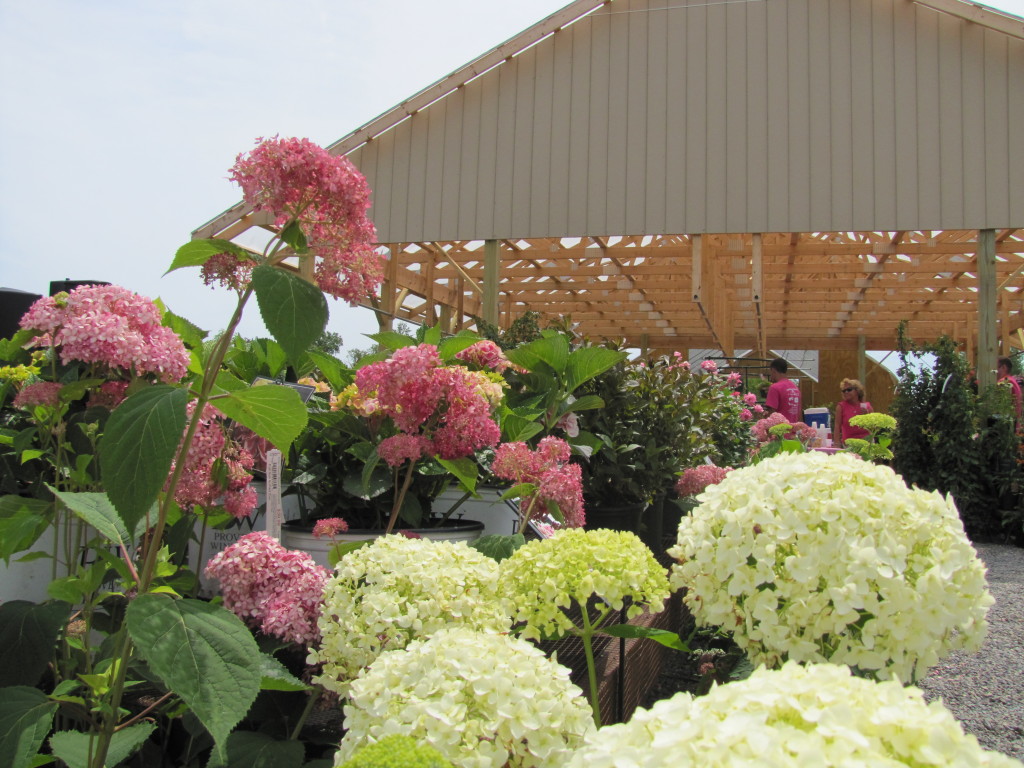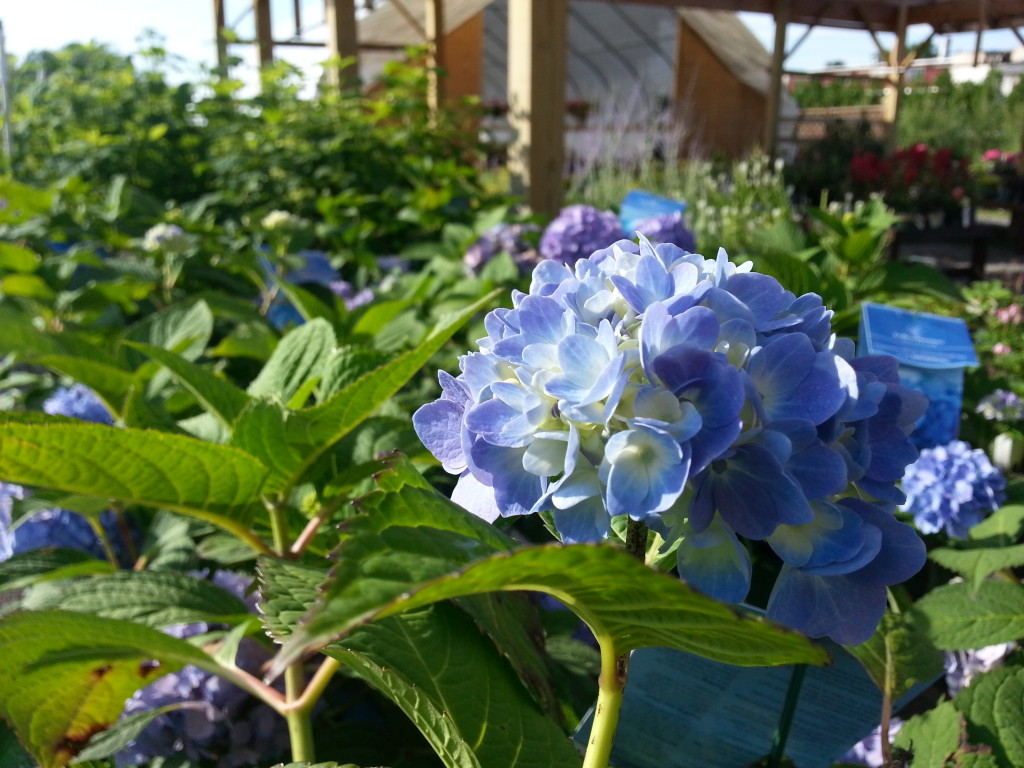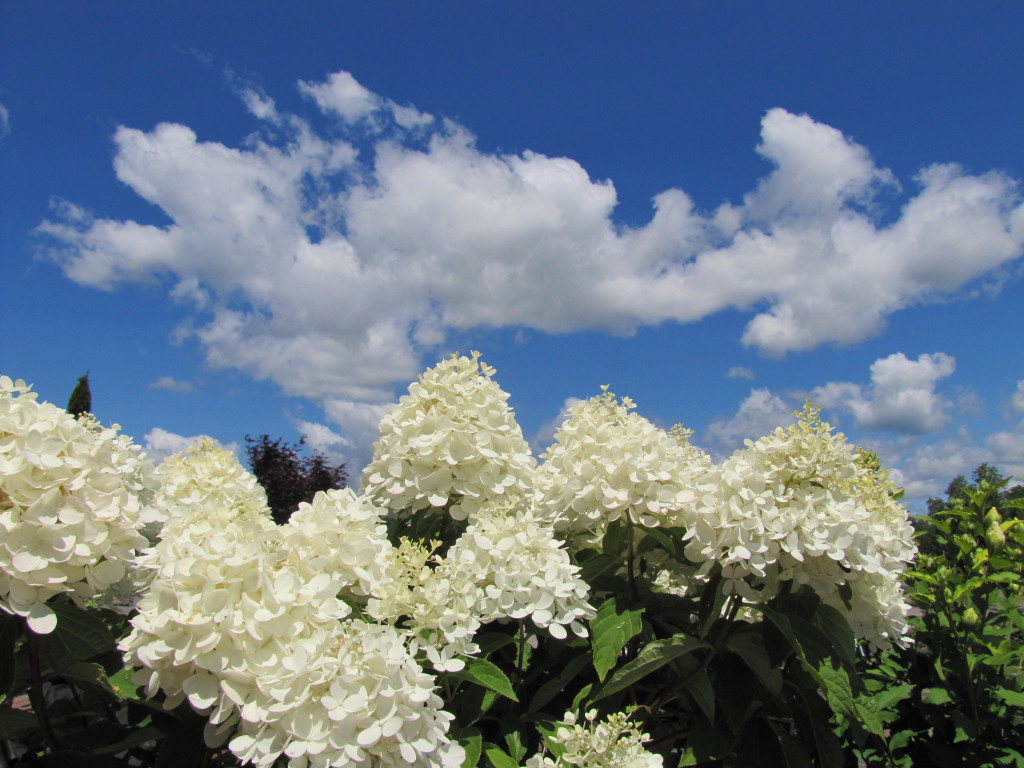Macrophylla, Arborescens, Quercifolia, and Paniculata… which one do you have?
Hydrangeas are medium sized deciduous shrubs with large leaves and attractive, long-lasting summer flowers. The large showy flowers appear in midsummer to late summer and vary in form from flat “Lacecap” clusters, to big globe shaped flowers to tall upright panicles. Flower color on the blue varieties will vary from pink to blue depending on how acidic the soil is. Hydrangeas prefer sun to partial shade and moist, well drained soil.
Arborescens (Smooth) Hydrangea
This New England native boasts large clusters of 4-6” dull white to pink flowers from June into later summer. These shrubs are hardy to zone 4 and prefer sun to partial shade. Most have a mounding habit and will grow 3 to 5 feet tall and 4 to 6 feet wide. Varieties include: Annabelle (white flowers) and Invincible Spirit (pink flowers).
Macrophylla Hydrangea
(Big Leaf & Lacecap)
This rounded, deciduous shrub will quickly grow between 3 and 6 feet tall and just as wide. Numerous cultivars make a flower description difficult; however, they are all magnificent. Flower colors range from white and pink to purple and blue.
Most varieties bloom from July through August, some lasting longer. For the Big Leaf Hydrangeas, flower color depends on the soil pH; acid soil procedures blue flowers, alkaline produces pink. Of the listed varieties below, these seem to be the hardiest and the most consistent flowering of the Macrophyllas for our area.
Varieties include: Endless Summer, Twist & Shout, Blushing Bride, and Big Daddy, Glowing Embers, and Nikko Blue.
Paniculata (Panicle) Hydrangea
Hardy to zone 4, this hydrangea’s branching resembles a fountain; branches come from one central point and cascade over. A taller variety, these can reach heights of 6 to 10 feet. Panicle hydrangeas can also come in a tree form. White flowers emerge in mid July and mature to pinkish hue by September. Flowers are very fragrant and great for cutting and drying.
Varieties include: Pee Gee, Kyushu, Limelight, Pink Diamond, and Tardiva.
Quercifolia (Oakleaf) Hydrangea
These plants are wider than they are tall and can get as tall as 8 feet, but most do not exceed 4 to 6 feet. The oak-like leaf shape is a dark green color throughout the summer turning to shades of red, purple, and even orange. The clusters of flowers are upright and pyramidal and can reach 10” long. As the flowers age, they turn to a lovely shade of pink in the late summer and into fall. Varieties include: Oakleaf and Snow Queen.
Pruning & Deadheading
Hydrangeas are very forgiving and will not suffer if left un-pruned. In fact, young, recently planted shrubs are best left alone. Deadheading spent flowers will encourage new buds to set and bloom throughout the season; cutting blooms actually encourages more flowers. Leaving spent blooms on the plant through the winter adds interest and helps to insulate new buds. Do not prune spent blooms in the spring; you may risk pruning off new flower buds. Unless you are trying to maintain size, pruning Hydrangeas should only be done when necessary and only immediately after the flower is beginning to brown. Any longer after that, you may trim off next year’s flower buds.



